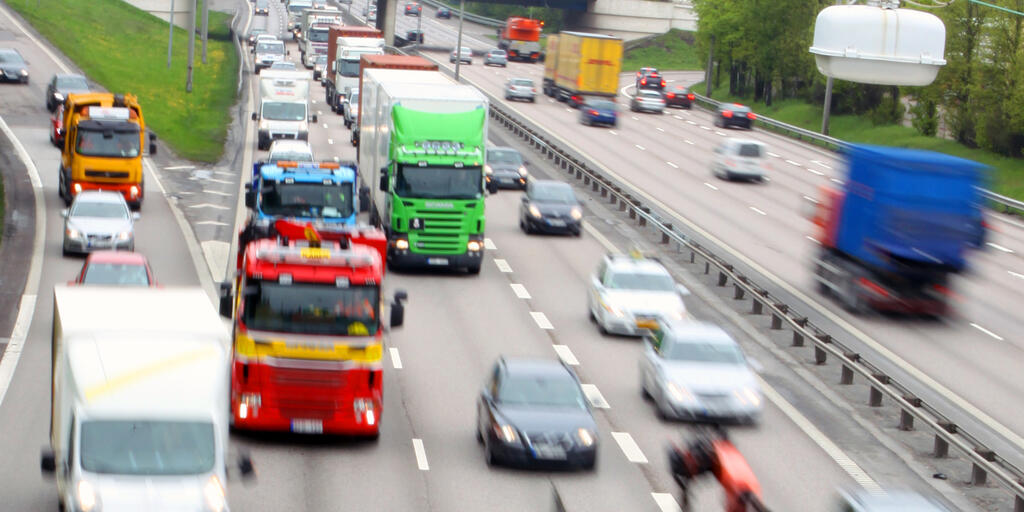Ring road logistics - Feasibility study
Increasing urbanization and the expected enlargement of regions as planned by Sweden’s metropolitan areas are resulting in major transportation challenges. There are many opportunities for enhancing transportation efficiency on arterial roads and ring roads in the metropolitan areas by dynamically prioritizing societally beneficial freight traffic and thereby boosting the capacity of existing infrastructure.

Implementation
The project adopted a broad approach to study the possibilities and effects of DPLF on arterial roads and ring roads and included a simulation, cost-benefit analysis, literature study, technical evaluation and assessment of the legal conditions to prepare for a demonstration project and long-term implementation. By simulating a stretch of road in Gothenburg, it was possible to study how implementing dynamic priority lanes affected driving times for specific groups of vehicles on this simulated stretch of road and then calculate the socioeconomic value based on the results. Various implementation scenarios were also evaluated by studying both literature and the legal conditions and it was established how the concept could be used to create incentives for more sustainable freight movements. Technology and system architecture has since been investigated through interviews and literature studies of related projects, resulting in a suggested technical design to enable DPLF. Since this was a feasibility study ahead of a demonstration project, the project also looked at suitable stretches of road that could be used for demonstration and the relevant parties to involve in this work.
Results
The conclusion is that implementing DPLF would be of socioeconomic benefit to the specific area used in the simulation. Prioritizing certain freight traffic on ring roads can also create an incentive for more sustainable fright transportation and help meet transportation, environmental and business development objectives at local, regional and national level. However, granting access only to freight transportation that meets certain pre-set requirements that fulfill general targets for sustainable transportation requires a technical solution that supports this goal and provides compliance controls. Technological advances are not, however, the main barrier to implementation. The main barriers are of an organizational, legal and political nature. It would be beneficial to demonstrate a technical system to showcase how a functional system can enable dynamic priority lanes for societally beneficial freight traffic. The effects of the concept should also be evaluated further to present proposals on potential business models and how to overcome barriers in the legal framework so as to allow for implementation.
A demonstration of the technical system is scheduled to be carried out under the framework of the EU’s Nordic Way2 project and a continuation study that further develops the organizational and legal basis for dynamic priority lanes is also being prepared.
Partners
The partners in this project were: DB Schenker, the Swedish Transport Administration, Region Västra Götaland, Chalmers University of Technology, Royal Institute of Technology, Swedish National Road and Transport Research Institute, City of Gothenburg, City of Stockholm and CLOSER. AB Volvo, Scania and Ericsson are supporting the continued development of the project and the first two companies were part of the reference group through their participation in CLOSER’s Round Table on Urban Mobility.
The project is financed by FFI, the Swedish Transport Administration and Region Västra Götaland with a total budget of SEK 3.7 million. The final project report is available in English together with sub-reports for the various work packages.
Reports
Do you want to know more about "Ring road logistics - Feasibility study"?

